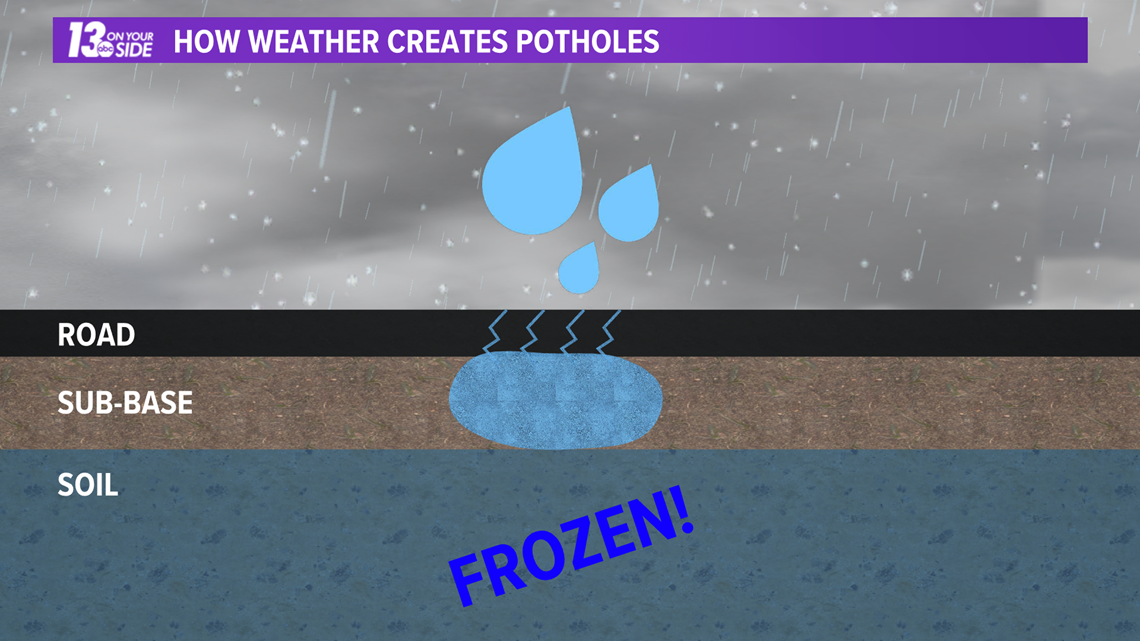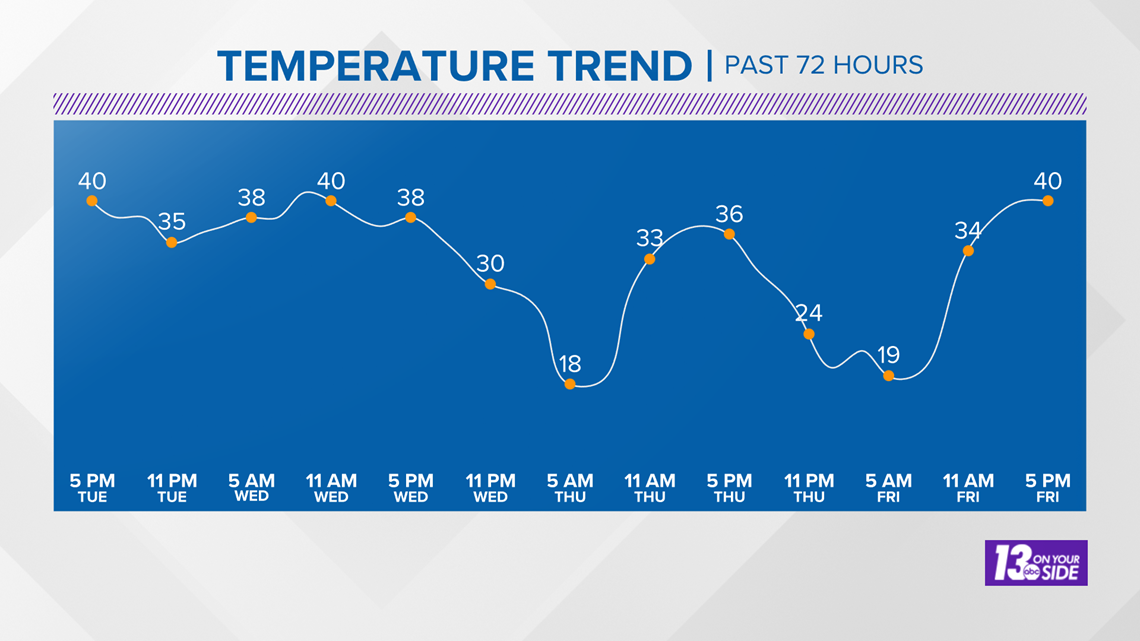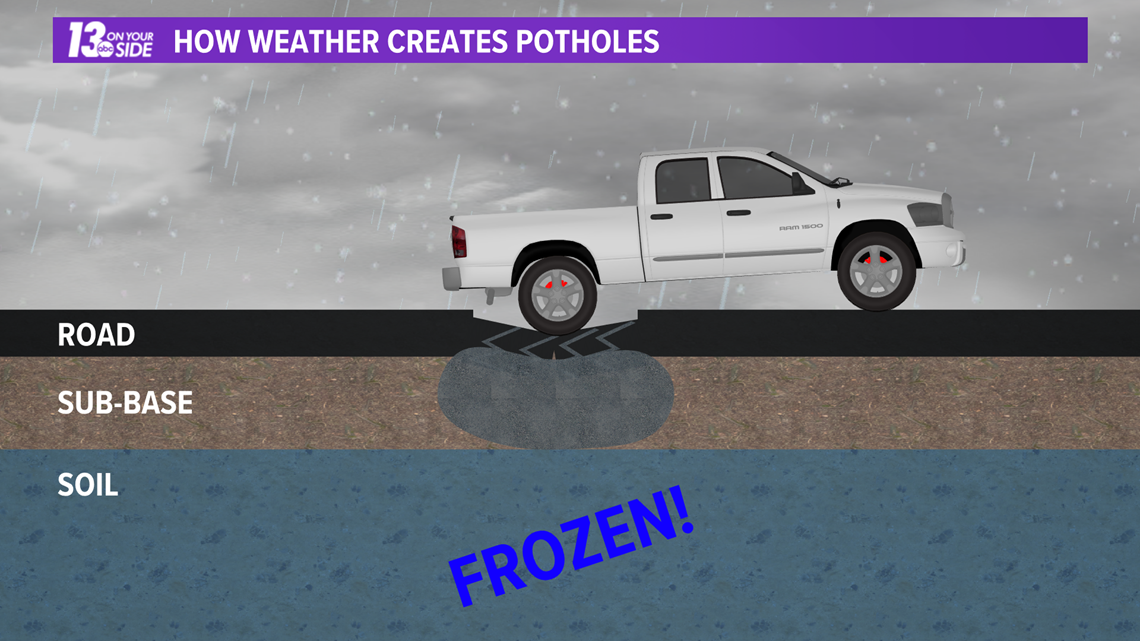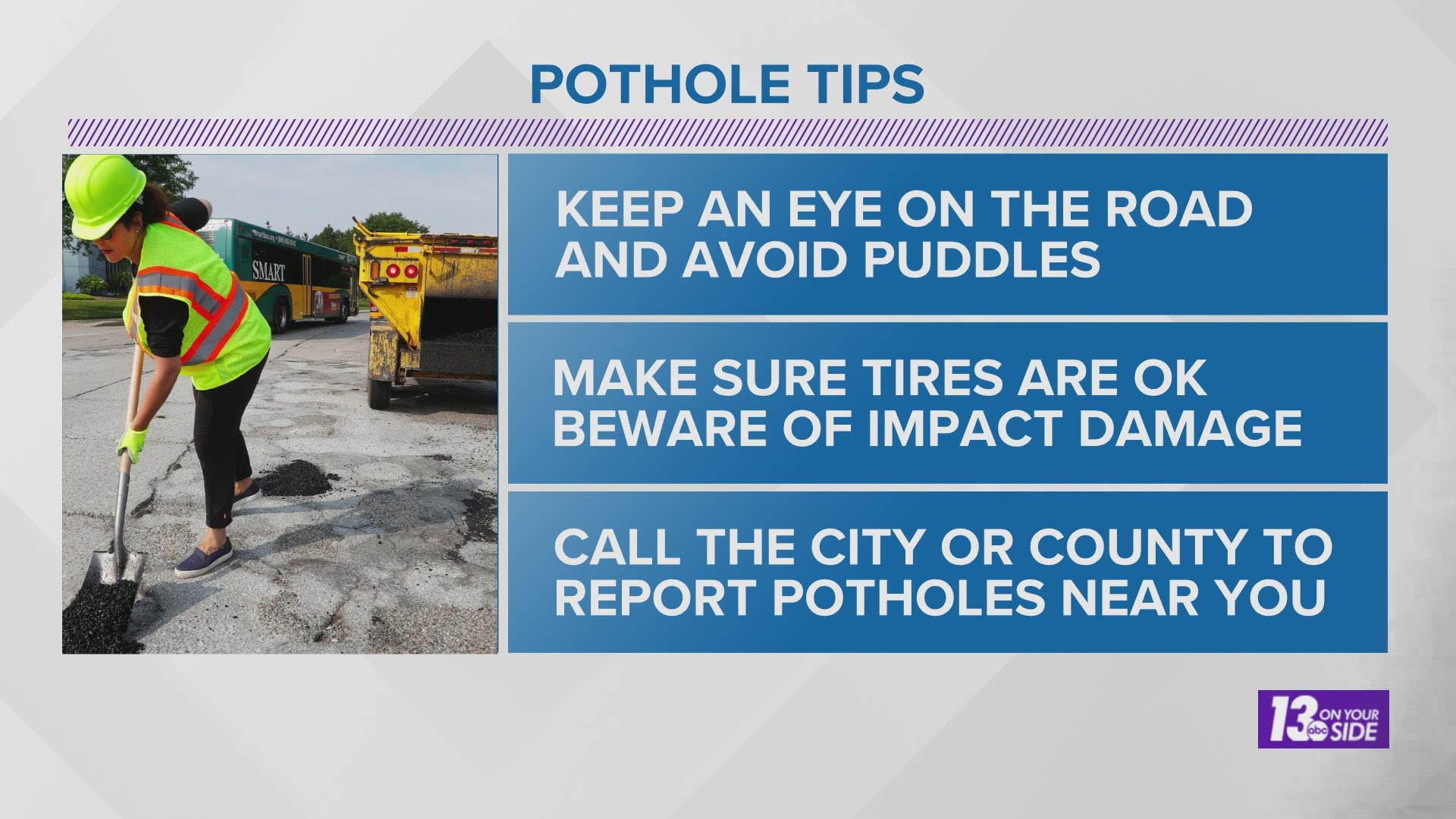GRAND RAPIDS, Mich. — Death, taxes, and potholes. All three are certainties in West Michigan.
The bit about potholes becomes especially true as we start to transition from the colder days of winter to the warmer days of spring. While local cities and counties work hard to patch the holes as they come up, it's a battle that cannot be fully won against mother nature who will never give up.
The question becomes though, if we know warmer weather creates potholes, why can't we stop them from forming?
Well, it's just the nature of how roads are made and how water impacts those surfaces. Let's take a look in detail.
How Potholes Form:
Road surfaces start to deteriorate from the moment they are first put down. Wear from the weather, traffic, and shifting soils all lead to cracks forming in the road surface over time.
When it rains these cracks let water through the road surface and into the sub-base below. When the weather is warm this isn't a problem and the water will drain into the soil. When the weather is just starting to warm up though, the soil layer is still frozen. This means the water becomes trapped in the road and the sub-base.


During the warming months many days reach highs above freezing, but at night temperatures still fall below freezing. That's the exact pattern we have in place right now in West Michigan.


The water that seeps into the cracks of the road during the day when temperatures are above freezing, then turns to ice overnight when temperatures fall below freezing. This ice expands to take up more space than the liquid water and forces the cracks in the road to open wider and hollows out an area in the sub-base below.


The next day this frozen water will again turn to liquid, leaving behind expanded cracks and a weak spot in the sub-base. At this point all it takes is a car to drive over the weakened road to cause it to collapse in and a pothole to form.


These potholes can only be temporarily fixed until the warmer and drier months arrive, and since there is no way to prevent them from forming, the best advice is to use caution while driving and report them to your city/county officials when you spot them.
Make sure you keep your tires fully inflated, avoid driving through puddles as they are likely concealing a pothole, and make sure to follow up on any suspected damage to your vehicle from a pothole to ensure its safe continued operation.
As always, if you have something weather related you would like me to explain, you can find my contact information below.
Stay safe out there!
-- Meteorologist Michael Behrens
Follow me on social media! Facebook Meteorologist Michael Behrens, Twitter @MikeBehrensWX, and Instagram @MikeBehrensWX.
Email me at: MBehrens@13OnYourSide.com.
Have a 30-second video or still photo to share? We'd love to share it with everyone! Email your image to Weather@13OnYourSide.com or post it to our 13OnYourSide Facebook Page.
►Make it easy to keep up to date with more stories like this. Download the 13 ON YOUR SIDE app now.
Have a news tip? Email news@13onyourside.com, visit our Facebook page or Twitter. Subscribe to our YouTube channel.

